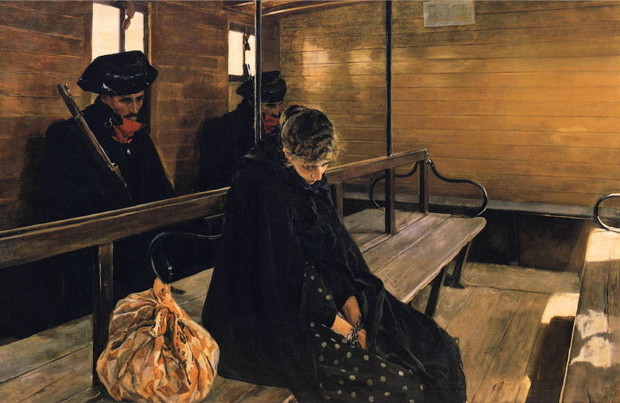5 Famous Artists Who Were Migrants and Other Stories
As long as there have been artists, there have been migrant artists. Like anyone else, they’ve left their homeland and traveled abroad for many...
Catriona Miller 18 December 2024
Joaquín Sorolla y Bastida was a Spanish painter whose style was a variant of Impressionism. His best works, painted in the open air, vividly portray the sunny seacoast of Valencia. He is famous for his dexterous representation of people and landscapes under the bright sunlight of his native land and sunlit water.

The painting you see above is a piece very typical of Joaquín Sorolla. Charming, isn’t it? As winter is in a full swing, let’s leave this cold weather and turn to Sorolla’s warm masterpieces. Here are eight things everyone should know about this great Spanish artist:

Sorolla was from a poor family and was orphaned at age two – his parents probably died from cholera. Joaquin and his sister were cared for thereafter by their maternal aunt and uncle. Luckily his artistic talents were quite visible and he received his initial art education at the age of nine in his native town.

Sorolla displayed an early talent and was admitted to the Academy of San Carlos in Valencia at age 15. After further studies in Madrid, where he vigorously studied master paintings in the Museo del Prado, he went to Rome and Paris. Then he returned to Valencia. Initially, he painted historical and social realist works, one of which, Another Marguerite (1892), was his earliest success. The painting was awarded a gold medal at the National Exhibition in Madrid, then first prize at the Chicago International Exhibition, where it was acquired and subsequently donated to the Mildred Lane Kemper Art Museum in St. Louis, Missouri, USA.

In 1888, he married Clotilde Garcia del Castillo, who soon after bore him two daughters and a son. His family became quite a popular theme in his oeuvre.

A great turning point in Sorolla’s career was marked by Sad Inheritance (1899). This extremely large canvas depicted crippled children bathing at the sea in Valencia under the supervision of a monk. (The polio epidemic struck the land of Valencia some years earlier.) The painting earned Sorolla his greatest official recognition, the Grand Prix and a medal of honor at the Universal Exhibition in Paris in 1900, and the medal of honor at the National Exhibition in Madrid in 1901.
After this painting, Sorolla never again returned to a theme of such overt social consciousness.

In 1906 Sorolla exhibited for the first time at the Galerie Georges Petit in Paris, one of the main Impressionist galleries. It was a resounding success and helped establish Sorolla’s international reputation. The show included nearly 500 works, early paintings as well as more recent sun-drenched beach scenes, landscapes, and portraits. His productivity amazed critics and was a financial triumph.

In 1908 Sorolla met philanthropist and collector Archer Milton Huntington who made him a member of The Hispanic Society of America in New York City and invited him to exhibit there in 1909. The exhibition comprised 356 paintings, 195 of which were sold. Sorolla spent five months in America and painted more than 20 portraits during that time.

The Hispanic Society of America commissioned him to paint decorative scenes for its library in New York City depicting life in the various provinces of Spain. It took Sorolla seven years, from 1912 to 1919, to complete the series which left him exhausted. He suffered a stroke in 1920, which left him paralyzed on his entire left side and unable to work. He died three years later at the age of 60 in his home.

In 1932 the artist’s house in Madrid was turned into a museum, now known as the Sorolla Museum. This typical Spanish house from the first half of the 20th century was his home and workshop for the last eleven years of his life. His family turned over his estate to the Spanish State, which decided to convert it into a museum showcasing his many paintings and personal belongings (sculptures, letters, textiles, furniture, etc.) which the painter collected throughout his life.
DailyArt Magazine needs your support. Every contribution, however big or small, is very valuable for our future. Thanks to it, we will be able to sustain and grow the Magazine. Thank you for your help!